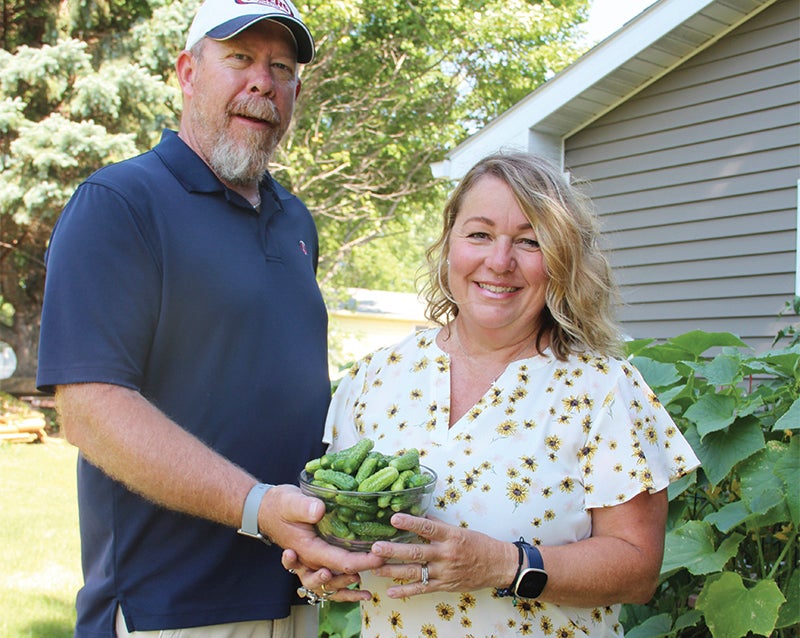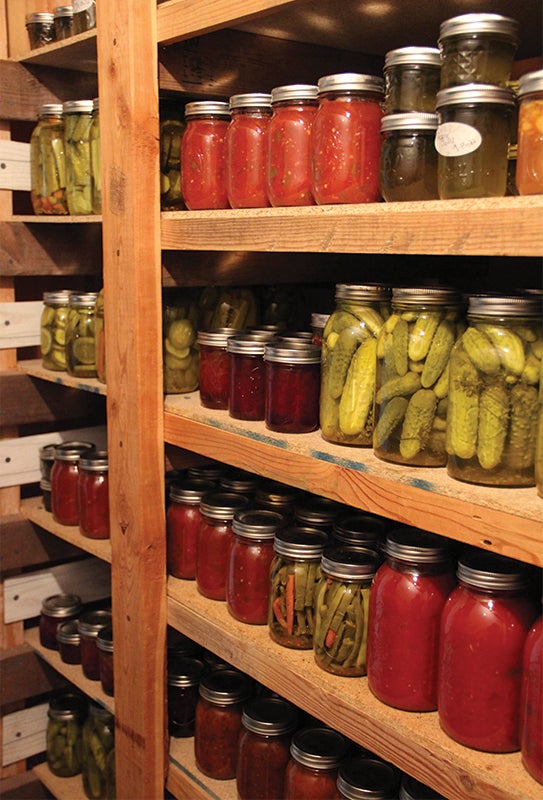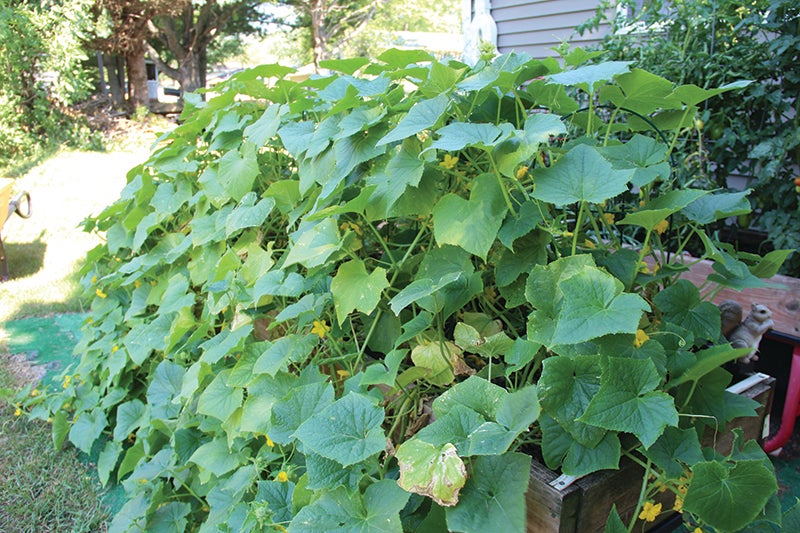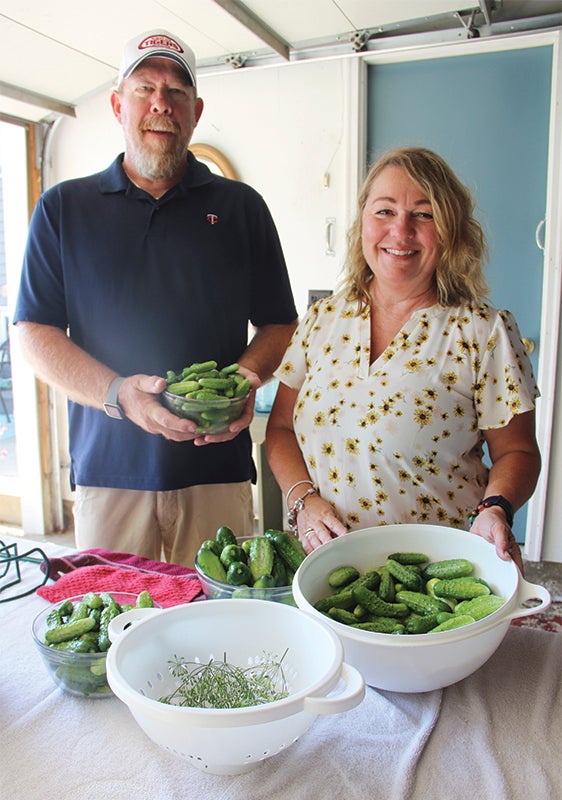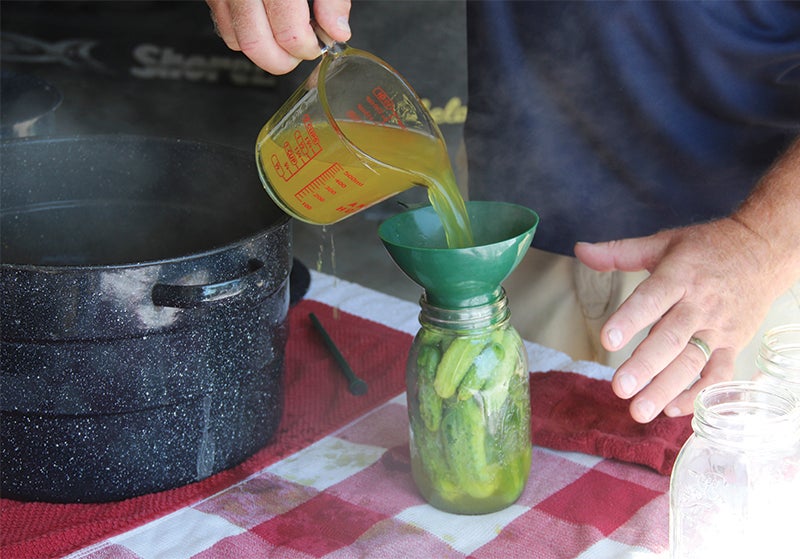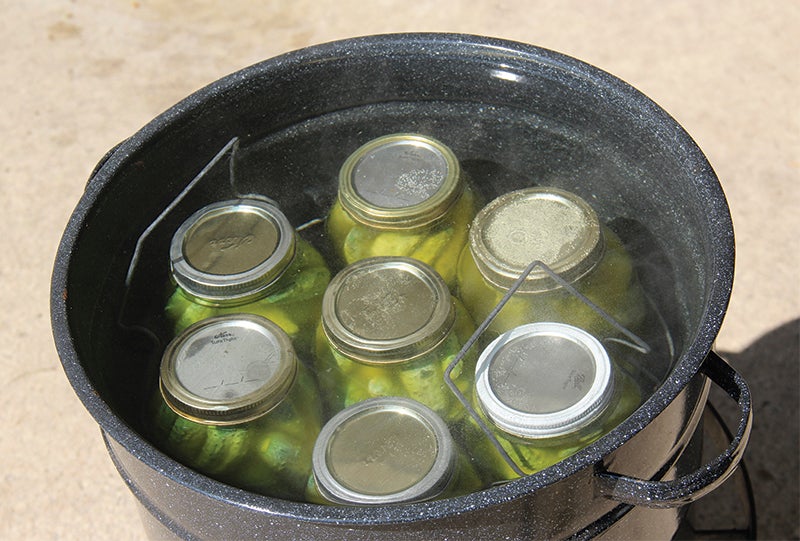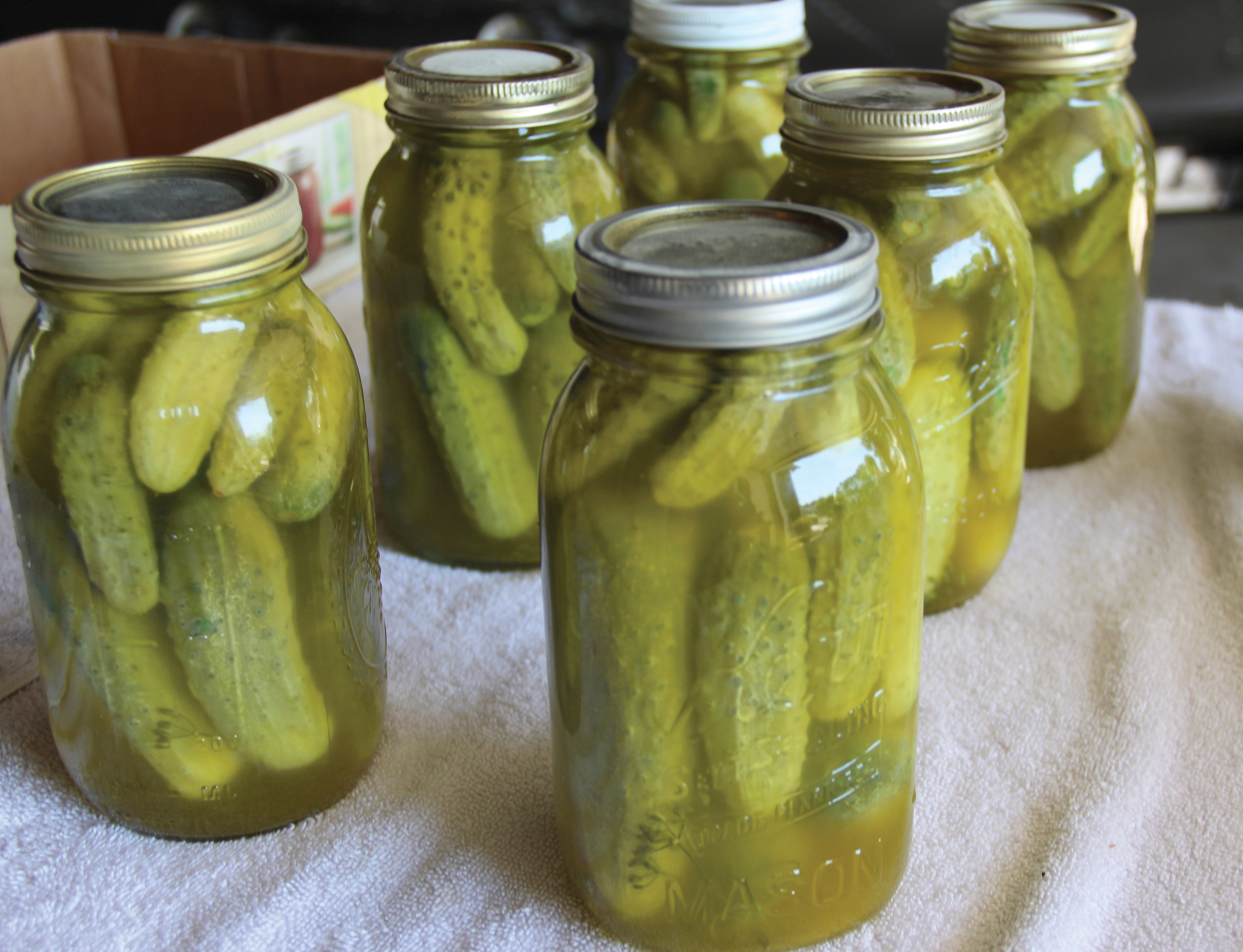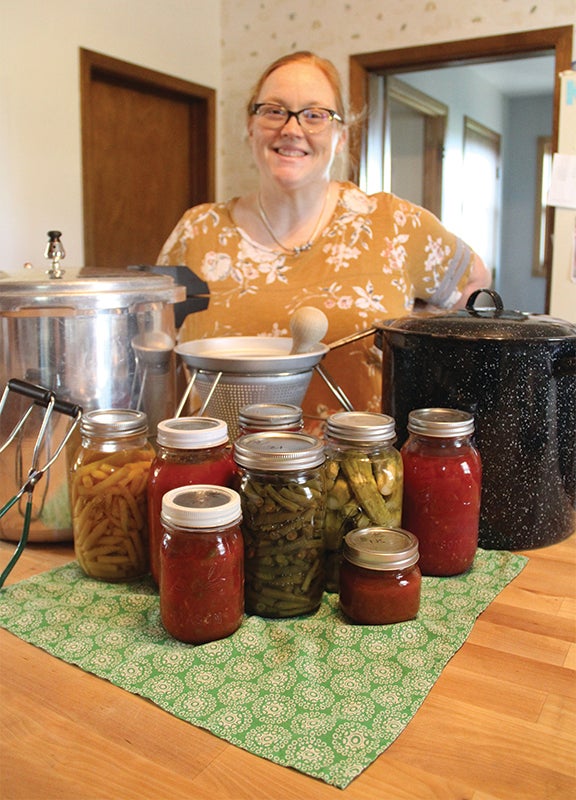Jump aboard the canning craze
Published 11:21 am Wednesday, September 13, 2023
|
Getting your Trinity Audio player ready...
|
Area families say canning is a fun hobby, allows them to eat foods they’ve grown year-round
What was once old could always make a comeback. Such is the case with canning, which preserves fruits, vegetables, jams, jellies, eggs and sauces, among others.
Canning is also used to pickle items from the garden and preserve them for future use, and allows people to put their own takes and flavors on products.
“We grow it, we can it, we preserve it,” said Jon Woodside, who — along with his wife, Kathy — cans. “[It’s] fresher and we can tweak it to how we like it to taste verses a standard thing in the store.”
Canning can be done for most things, including meats such as venison and fish, and is useful for anyone with a fruit tree.
For the Woodsides, canning starts with growing something, though knowing when it’s ready to be picked was a personal preference. For example, with pickles some people might like a bigger one, while others could prefer a small pickle.
After whatever the couple plans to can is determined ready, they’ll take it home from their community garden plot or from their backyard raised garden beds.
“Sometimes it might take two or three days of gathering from the garden to get enough to make the size of batch that we want,” he said.
For Kathy, canning one jar at a time didn’t make sense. On the other hand, waiting too long meant they’d be canning a lot at one time.
If they do not have enough right away, they’ll clean the produce and place it in the refrigerator. Once enough is gathered, they’ll clean it again right before the canning process starts.
Then they’ll determine the size of jars to use. Before anything goes in, jars need to be sanitized with boiling water. They’ll can everything outside using portable propane tanks.
“Then we mix our brine up, we bring that up to a slow boil over 10 minutes,” Jon said.
They’ll then stuff jars with the clean produce and ladle in their unique brine.
“We try to utilize all the space in the jar,” Jon said. “You want them nice and tight.”
When putting on the seal and ring, it was important to leave a little air space between the produce and brine and the lid to ensure the lid would seal.
Then it’s time to seal using glass Kerr or Ball canning jars with lids and rings. They’ll then put the jars back in the boiling water to seal them for 10 more minutes.
To remove the hot glass from the water, they’ll use a canning grabber before setting them on a table to rest and cool to room temperature.
“You’ll sit here and all of a sudden you’ll hear a ‘pop,’” he said. “It’s like music to your ears as a canner. Then you know they’re sealed.”
After labeling the now shelf-ready glass jars, the Woodsides will put the finished products in their basement, which has turned into their own personal grocery store with dates and labels for products.
That was just for canning single items.
When canning products with multiple ingredients such as salsa, the process becomes an all-day affair.
“We’ll chop it up, put that in [a pot] and then it will boil in there,” Kathy said. “Salsa we cook for 20 minutes, just the salsa alone.”
After putting the salsa (or anything with multiple ingredients) in the jar, the jars will be placed in the water bath for an additional 10 minutes to seal. Jar size doesn’t matter. They also wouldn’t start canning if they didn’t have at least two hours to dedicate to it.
Once the finished product is sealed, the Woodsides may have to wait for the flavoring solution to be absorbed. But in the case of jams and salsas, they’ll be ready for consumption immediately.
If the couple can’t grow exactly what they’re looking to can, they’ll visit the farmers market or trade produce with friends who have what they want. And they won’t go out of their way to buy bulk from a grocery store.
Kathy emphasized canning could occur at any time of the year — including when they made peach jam in February — though for them canning typically started when the garden’s produce was ready for harvest.
And while all that work may deter some people, it didn’t deter Kathy or Jon in the least, and they described canning as a labor of love and a habit.
“It’s fun,” Jon said. “It’s a great hobby — it’s a good way to use your produce from the garden.”
Besides using them for personal consumption, the couple gifts canned items.
“We have a goal of how many jars we want each year of this and this and this,” Kathy said. “It’s just a hobby, and it’s something we just enjoy.”
Among the challenges involved in canning was the variable of not knowing what the garden could produce any given week, month or year.
“[In early July] we had hail in Albert Lea that beat our plants up pretty good,” Jon said.
Having the time to can was also a problem, especially with both of them working.
Another challenge is what to do if a jar doesn’t seal, though according to the Woodsides that doesn’t happen often. Jars could also shatter if they became too cool before being placed back in the hot water bath to seal.
Canning has also helped them develop patience and an appreciation for gardening and harvesting.
Their advice to anyone considering canning was simple: Just try it.
“You might be surprised,” Jon said. “Don’t be afraid to do it.”
For context, it took the Woodsides “a long time” to hit their stride and get flavoring right after trial-and-error.
Kathy, who grew up on a farm, started canning at a young age but took some time off before starting up again after she and Jon married. The two have been canning for five years now.
“We get to spend the day together, we get to garden, you’re more in-tune to your garden and you’re getting excited cause it’s time to harvest,” Jon said.
Kathy oversees marketing and public relations at St. John’s Lutheran Community, while Jon works at Lou-Rich.
Fellow canner Kelsey Johanson described canning as “a way of life” in her family and was something she has done her entire life.
“I remember as a little kid snapping green beans and learning how to do this,” she said. “My grandparents, my great-grandparents did this.”
Like the Woodsides, she saw canning as a way to save money and avoid trips to the grocery store.
“It’s taking either locally sourced or produce you’ve grown on your own and preserving it to use throughout the year, rather than purchasing store-bought foods,” she said, describing the difference between buying cans and doing it yourself as quality.
She also had the ability to choose what she wanted to use.
“You know where your tomatoes are coming from,” she said. “You pick them out, you handle them, they’re not handled by machines in a factory,” she said. “You’re picking the tomatoes, the produce that you use.”
Canning was also a family affair, with her extended family coming together and picking what they wanted. For her, that included people snapping green beans into 1-inch bites.
While one group did that, another washed the green beans.
“You put them in the sink and rinse them in cold water,” she said.
Another group would then pack them in hot Ball glass canning jars. They heated them ahead of time by placing them in the oven at 200° for a couple of minutes.
They’ll then pack the beans tightly into the jar before ladling in hot — and not boiling — water with a 1/2 inch space at the top of the jar.
“Make sure you get all the bubbles out,” she said.
She’ll also put a teaspoon of canning salt in the jar before placing a canning lid on top. Before she places the lids on, she’ll have the lids soaking in hot water to soften them for a couple minutes.
“You take the lid out, put it on the jar and put a ring on,” she said.
Because green beans are a low-acidic vegetable, she’ll place a low-pressure cooker (with three inches of water at the bottom) on the stove. After filling the pressure cooker with seven quarts of green beans with lids on them, she’ll put a lid on the pressure cooker.
“Wait for a good steam to come out of the top, then you put the weight on the pressure cooker, it’s a 10-pound weight,” she said, noting the jars should be processed for 25 minutes.
After the canner is safe to open and the pressure is down to zero, she’ll place a towel on the counter and lift out the hot jars before letting them sit on the towels for 24 hours.
Johanson said anything non-acidic, like green beans, couldn’t be preserved without a pressure cooker.
Like the Woodsides, Johanson agreed canning was a labor of love.
“I think people should can if they want to can,” she said. “I think it’s a great skill and it is really [valuable] in our family.”
In her opinion, canning allowed for a better taste. And canning allowed her to store tomato juice, green beans and corn, so she never had to shop for those at the grocery store.
Within her family, they will can tomato juice, stewed tomatoes, green beans, yellow beans, salsas, jams, carrots, soups, spaghetti sauce and dill pickles.
Besides knowing where the food came from, she also said canning provided more control over what someone wanted in their food, which in turn made food taste fresher.
“If you have an interest in it at all I think you should do it,” she said. “It’s so rewarding, and it is a really great family-bonding time.”
On the other hand, canning meant having patience, and she recommended to wait to can until produce was fresh and readily available.
She also urged people not to rush the canning process, noting she had tried cutting corners only for it to backfire.
“One year we tried to do that and we ended up dumping out 200 quarts of tomatoes because we did something wrong and we skipped a step,” she said.
The Woodsides are able to get all the supplies for canning at Ace Hardware, Hy-Vee and Bomgaars. The rings and lids can also be found at Walmart. The Woodsides purchased the portable burners at Cabela’s. For illustrated directions on canning, Johanson recommended using the Ball Canning book.
Pepper jelly
Prep Time: 15 minutes
Cook Time: 10-15 minutes
Yield: 6 to 8 jars
Ingredients
1 1/2 cups vinegar (cider or white)
6 1/2 cups sugar
2 3/4 cups minced jalapeńo peppers (seeded and minced)
1 teaspoon butter
1 pouch (3 fluid ounce) Certo Liquid Pectin
Directions
Boil vinegar and sugar together in a saucepan, making sure it comes to a full rolling boil.
Clean, de-seed and chop the peppers into small cubes
Add peppers and 1 teaspoon of butter and bring to a boil again.
Stir in pectin and boil for one full minute.
Pour into glass jars and cap.
Wipe down jars. If you would like to keep the jelly for up to 12 months, you should place the jars at this stage into boiling water for 10 minutes.
Leave upright on counter, without touching until all have sealed (the tops will pop one at a time, then they are sealed).
Serve with softened cream cheese to spread on crackers, and add a dollop of jelly on top.
— Provided by Kathy Woodside


